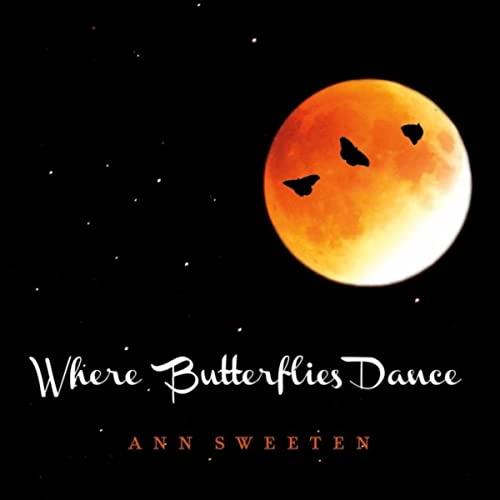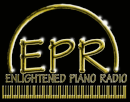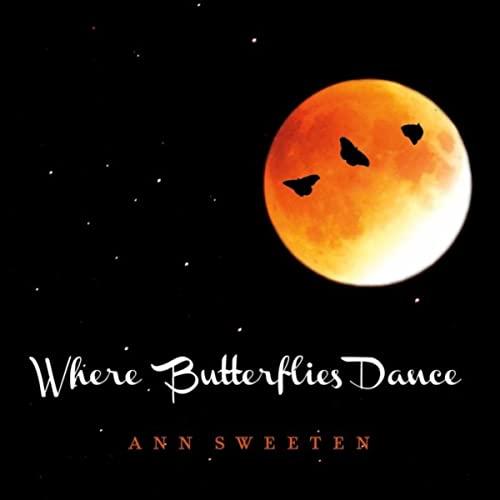Ann Sweeten
Salem, MA, UNITED STATES
Official Website
Steinway Artist
Thirteen-Time Music Awards Nominee, ASCAP Popular Awards Recipient 2002 − 2014, 2016, 2018, 2019
After over 20 years of enamoring audiences on the Concert stage and on Radio/Internet Airwaves, Ann Sweeten’s signature style is recognized world-wide. Often placed in the New Age genre, her style is decidedly unique, embracing not only the classical realm, but aspects of jazz, film scoring, and popular music. Sweeten’s music has aired and been reviewed across the world to wide critical acclaim and these are just some of the accolades awarded to her:
“A pianist whose abilities are unrivalled”;”musical genius”;” beauty incarnate”;” inimitable”;”reminiscent of something written by the great impressionists, out of the ordinary..”; “one of the most instantly recognizable ‘voices’ in contemporary instrumental music”; “musical Narnia”; “exquisite music performed by a consummate musician”; “the touch of a master”; “a true maestro at work”;”outstanding technique”;” her astute control of nuance and tempo will beguile you”; “astounding ability to paint a vivid picture”;”the music bears hints of the musical masters’ phrasing in the music. I hear notes of Barber, Tchaikovsky, Rachmaninoff, Brahms”; “You can’t call this music ‘Jazz’, nor can you pigeonhole it as ‘New Age’… because it’s purely/simply ‘Ann’ .”; “..I could feel a Higher Power within each song. It is hypnotically intoxicating. Sweeten is a gifted and anointed spirit to be sure.”.
Whatever words you may use to describe this artist, her music is always timeless, elegant and classic, always, Ann Sweeten.
Her newest offering Before Today, Beyond Tomorrow is a tour de force of emotion, technical prowess and prodigious composition – “the further evolution from a pianist who has always delivered musical brilliance.” Will Ackerman, founder Windham Hill Records
During the album’s conception, Ann Sweeten was diagnosed with Leukemia. Before Today, Beyond Tomorrow refers to the time before diagnosis, and then to the horizon, beyond the immediate, with hope for the future.
In her own words:
“I have never needed a wake-up call in life thru diagnosis or event, as I have always felt so very present and awake, but this third diagnosis has dropped me to my knees, and in a way I can’t explain, the world is different, my life is different, my reactions are different, my patience is greater, my capacity for forgiveness as well. Life itself seems so fragile that I hold it like a wounded bird, so that it may grow well within my care and fly free again, carrying music on its wing.”
One of the most decorated pianists of the past decade with albums consistently ranking in the Top 5 NAR and ZMR Radio Charts, she is also one of the most played modern instrumentalists in North America. Discography includes 14 Albums (1 DVD) and 6 compilations, one of which is The Gathering IV produced by Will Ackerman at Imaginary Road Studios. The Gathering, first in the series, was Album of the Year in 2012.
Sweeten blends stylish, sophisticated, technical composition in well-rooted classical themes with originality and passion, resulting in performances that pack an emotional wallop. A truly well-rounded individual and artist, Ms. Sweeten is a staunch environmentalist, animal activist and vegetarian. In addition to her Concert and Recording career, she is also a professional actress/singer/dancer with Actor’s Equity Association. Ann Sweeten is herself a Breast Cancer survivor twice over, is involved with the Arts in Healthcare Initiative and is now battling Leukemia.
Steinway Artist
Thirteen-Time Music Awards Nominee, ASCAP Popular Awards Recipient 2002 − 2014, 2016, 2018, 2019
After over 20 years of enamoring audiences on the Concert stage and on Radio/Internet Airwaves, Ann Sweeten’s signature style is recognized world-wide. Often placed in the New Age genre, her style is decidedly unique, embracing not only the classical realm, but aspects of jazz, film scoring, and popular music. Sweeten’s music has aired and been reviewed across the world to wide critical acclaim and these are just some of the accolades awarded to her:
“A pianist whose abilities are unrivalled”;”musical genius”;” beauty incarnate”;” inimitable”;”reminiscent of something written by the great impressionists, out of the ordinary..”; “one of the most instantly recognizable ‘voices’ in contemporary instrumental music”; “musical Narnia”; “exquisite music performed by a consummate musician”; “the touch of a master”; “a true maestro at work”;”outstanding technique”;” her astute control of nuance and tempo will beguile you”; “astounding ability to paint a vivid picture”;”the music bears hints of the musical masters’ phrasing in the music. I hear notes of Barber, Tchaikovsky, Rachmaninoff, Brahms”; “You can’t call this music ‘Jazz’, nor can you pigeonhole it as ‘New Age’… because it’s purely/simply ‘Ann’ .”; “..I could feel a Higher Power within each song. It is hypnotically intoxicating. Sweeten is a gifted and anointed spirit to be sure.”.
Whatever words you may use to describe this artist, her music is always timeless, elegant and classic, always, Ann Sweeten.
Her newest offering Before Today, Beyond Tomorrow is a tour de force of emotion, technical prowess and prodigious composition – “the further evolution from a pianist who has always delivered musical brilliance.” Will Ackerman, founder Windham Hill Records
During the album’s conception, Ann Sweeten was diagnosed with Leukemia. Before Today, Beyond Tomorrow refers to the time before diagnosis, and then to the horizon, beyond the immediate, with hope for the future.
In her own words:
“I have never needed a wake-up call in life thru diagnosis or event, as I have always felt so very present and awake, but this third diagnosis has dropped me to my knees, and in a way I can’t explain, the world is different, my life is different, my reactions are different, my patience is greater, my capacity for forgiveness as well. Life itself seems so fragile that I hold it like a wounded bird, so that it may grow well within my care and fly free again, carrying music on its wing.”
One of the most decorated pianists of the past decade with albums consistently ranking in the Top 5 NAR and ZMR Radio Charts, she is also one of the most played modern instrumentalists in North America. Discography includes 14 Albums (1 DVD) and 6 compilations, one of which is The Gathering IV produced by Will Ackerman at Imaginary Road Studios. The Gathering, first in the series, was Album of the Year in 2012.
Sweeten blends stylish, sophisticated, technical composition in well-rooted classical themes with originality and passion, resulting in performances that pack an emotional wallop. A truly well-rounded individual and artist, Ms. Sweeten is a staunch environmentalist, animal activist and vegetarian. In addition to her Concert and Recording career, she is also a professional actress/singer/dancer with Actor’s Equity Association. Ann Sweeten is herself a Breast Cancer survivor twice over, is involved with the Arts in Healthcare Initiative and is now battling Leukemia.
“Where Butterflies Dance” reviewed by Donovan Johnson

Where Butterflies Dance” is the latest album by piano artist Ann Sweeten, recorded at Imaginary Road Studios and co-produced by long time music legend Will Ackerman. As the title would suggest, this is a very relaxed recording, and is at times lively in only a very gentle and somewhat fragile way. Overall, the recording is very serene, but don’t mistake that to mean it’s slow or uninteresting. The tempos are often medium to brisk in nature, and Ann uses her left hand to create an ever present pattern of “fluttering” arpeggios throughout the album. Simultaneously she uses a very gentle touch at the piano, rarely moving beyond a loud volume for anything more than a few bars. Add to that the calming sounds of the flute, acoustic guitar and violin, and you have a recording that is something that can be harnessed as music to relax to, or used for more engaged listening.
The first of my preferred tracks on the album is “Elysian Fields.” This one sticks out as being unique in that the nature of the piece is very ethereal, and it’s really the only song on the album to capture this quality. The piano playing is very steady and consistent, and behind it we have some very “wet” vocal synth pads, which are a combination of guitar sounds by musician Jeff Pearce, and synth chords performed by Ann herself. Together this creates a very ambient feel inside of a piece that really isn’t ambient at all, as the piano playing is much too structured for that. This combination is really lovely, as it alternates and improvises between two major chords (E, back to D, and then back to E again). I don’t know how else to describe this but as “structured simplicity” at it’s finest, and the mixture of all of the above makes it my absolute favorite piece on the recording, hands down.
Next we move on to a very different sounding track, “Veil Of Tears.” This piece has many different musical elements interspersed throughout, and the use of these elements creates something very interesting to listen to. We have several different types of seventh chords that are used, often the major seventh, but these chords are combined with some dark and moody chords as well (the piece is actually written in A minor). Musically, that’s a brave move, and is something that’s not heard very often at all. What it creates is a very thoughtful, reflective piece that’s almost reminiscent of something written by the great impressionists, and simultaneously brought completely up to date in it’s approach. One can see butterflies of every color painting a vibrant picture in this piece.
Finally, let’s have a look at “Where Butterflies Dance,” the title track on the album. What we have here is a song that stands out in the way it’s approached musically, a gentle waltz with a left hand stride pattern. Once again, Ann uses her own musical influence to draw upon and creates something out of the ordinary. Much of the time, waltzes place an upward emphasis on the final count in each bar (3), leading back to count one. Ann does not do this, so what we hear is a pattern of “strong-weak-weaker,” and back to “strong” again. This is a subtle but very powerful distinction, as it changes the entire feel of the song in regard to a waltz. The right hand plays a gently improvised melody over top of the chords, with the sweet sounds of the flute and violin playing off of each other throughout the piece. The result is a lovely combination that doesn’t place you as the listener on the dance floor, but sets you aside as a spectator, one who is able to take in every element of a beautifully elegant waltz as an observer.
Ann Sweeten has done a wonderful job of putting together a recording that offers a lot of reflection, introspection, and musical picture painting. It’s very easy to listen to and uncomplicated, making it a perfect pairing for most occasions, whether they’re public or personal. The title is very appropriately named, as it fits the feel of the recording very well and is all that one would expect from an album titled “Where Butterflies Dance.”


